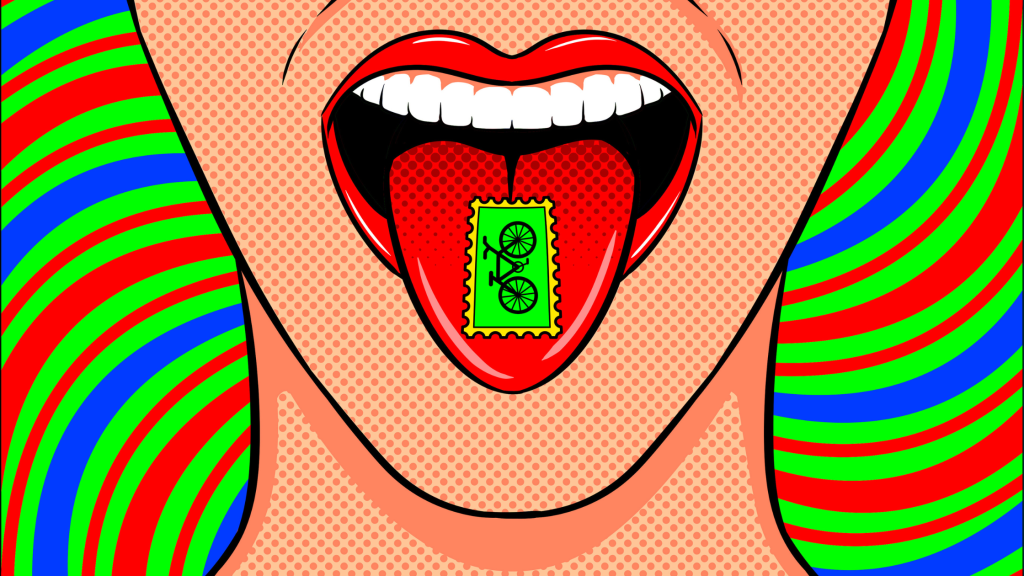LSD: From Serendipity to Resurgence in Therapeutic Research

The story of LSD (lysergic acid diethylamide) is a tale of serendipity, scientific curiosity, and a tumultuous journey from the laboratory to countercultural icon. In the mid-20th century, Swiss chemist Albert Hofmann unintentionally stumbled upon LSD while researching derivatives of ergot fungus. Little did he know that this chance discovery would shape the trajectory of psychedelic research and, later, become a symbol of the counterculture movement in the 1960s.
Albert Hofmann
Albert Hofmann’s journey into the realms of LSD began in 1938 when he synthesized the compound. However, it was in 1943, during a routine revisit of his creation, that he accidentally ingested a small amount of LSD. This moment marked the birth of LSD as a psychedelic substance, and Hofmann’s subsequent intentional ingestion on April 19, 1943, is celebrated as Bicycle Day. In a visionary move, Hofmann made LSD freely available to researchers, offering to send it to anyone interested in studying it. This open-handed approach resulted in a significant body of work exploring the therapeutic benefits of LSD.

The Story of Bicycle Day
The story begins when Hofmann synthesized LSD in 1938. Then it wasn’t until five years later, on April 16, 1943, that Hofmann decided to research the new substance and unintentionally spilled a small amount of the compound on his hand. Feeling unusual sensations he was intrigued by the experience and, three days later on April 19th, he decided to intentionally consume LSD. He did so under the supervision of his assistant and long story short… he took way too much.
Feeling uncomfortable he decided to leave his laboratory and embarked on what would become a historic bicycle ride home. Fearing he had poisoned himself, Hofmann asked his assistant to escort him home, an experience that would later be referred to as the first intentional acid trip.
As Hofmann cycled through the streets of Basel, Switzerland, the effects of LSD intensified, leading to a surreal and, at times, challenging experience. Sensations of time dilation, vivid colors, and altered perceptions marked this groundbreaking trip. Although the bicycle ride was a bad experience for Hofmann, he found the “come down” from the experience to be rather enjoyable.

Bicycle Day has become a symbolic celebration within the psychedelic community, recognizing the accidental discovery of LSD and the subsequent exploration of its mind-altering effects. It serves as an annual moment to reflect on the role of psychedelics in science, culture, and consciousness exploration, emphasizing the potential for unexpected and profound discoveries to shape our understanding of the mind and its mysteries.
Therapeutic Exploration and the Hippie Counter Culture
The 1950s and 1960s saw a surge in research into the therapeutic potential of LSD, with pioneers like Humphry Osmond and Timothy Leary exploring its effects on mental health. The counter culture of the 1960s embraced LSD, leading to widespread recreational use and societal concern. Despite the ensuing regulatory crackdown and stigmatization, LSD persisted as a symbol of rebellion and exploration.
Aldous Huxley
Aldous Huxley, the celebrated English writer and philosopher, played a significant role in popularizing LSD and championing its potential for expanding human consciousness. Huxley’s interest in altered states of consciousness and mystical experiences is evident in his literary works, most notably in “The Doors of Perception.” In this influential essay, Huxley detailed his experiences with mescaline, another psychedelic substance, and expounded on the idea that psychedelics could act as a gateway to profound spiritual insights. Huxley’s eloquent prose and thoughtful exploration of the mind’s potential made a lasting impact on the public perception of psychedelics and their potential benefits.

Aldous Huxley’s association with LSD extended beyond his literary endeavors. In the final moments of his life, as he battled terminal cancer, Huxley sought to explore the transformative potential of LSD one last time. On November 22, 1963, the same day as the assassination of President John F. Kennedy, Huxley passed away while under the influence of LSD. His death became a poignant moment, symbolizing the intersection of consciousness exploration, mortality, and the potential of psychedelics to provide insights into the human experience. Huxley’s advocacy for the responsible use of psychedelics has left a lasting legacy, influencing subsequent generations of thinkers, researchers, and artists in their exploration of the mind’s frontiers.
Humphry Osmond
Humphry Osmond, a British psychiatrist, played a pivotal role in the early exploration of LSD’s potential therapeutic benefits. In the 1950s, Osmond collaborated with renowned Canadian researcher Abram Hoffer to investigate the effects of LSD on mental health, particularly in the context of treating alcoholism.
Osmond coined the term “psychedelic” in a letter written to the renowned author Aldous Huxley in 1957. Seeking a word to encapsulate the mind-altering effects of substances like LSD, Osmond combined the Greek words “psyche,” meaning mind, and “delein,” meaning to manifest. In the letter, Osmond proposed the term “psychedelic” to describe the unique ability of these substances to manifest the mind, capturing the essence of the profound alterations in consciousness induced by psychedelics. This term would go on to become emblematic of an era of exploration and transformation, shaping the language and discourse surrounding the psychedelic experience and its potential for expanding human consciousness.

Osmond’s groundbreaking studies on alcoholism treatment with LSD yielded promising results, with some individuals experiencing significant reductions in alcohol misuse or achieving complete abstinence. This early research marked an era of optimism regarding the therapeutic potential of psychedelics, challenging conventional approaches to mental health treatment. Humphry Osmond’s contributions not only expanded our understanding of the psychological effects of LSD but also set the stage for further research and exploration into the realm of psychedelic-assisted therapy, influencing subsequent generations of researchers and practitioners in the field.
The Acid Tests
The Acid Tests were a series of events organized by author Ken Kesey and the Merry Pranksters in the mid-1960s that played a crucial role in the proliferation of LSD and the burgeoning psychedelic counterculture. Stemming from Kesey’s experiences as a participant in government-sponsored psychedelic experiments, the Acid Tests aimed to create an environment where individuals could collectively experience the mind-altering effects of LSD. These events were not conventional parties but rather immersive and often chaotic happenings characterized by vivid light shows, experimental music, and an abundance of psychedelic substances, including LSD. The Acid Tests served as a communal exploration of consciousness, fostering a sense of unity and shared experience among participants.

Timothy Leary
Timothy Leary, a Harvard psychologist and counterculture icon, made significant contributions to LSD research, leaving an indelible mark on the psychedelic movement in the 1960s. Leary first encountered LSD in the early 1960s and became captivated by its potential to induce transformative and mystical experiences. Alongside his colleague, Richard Alpert (later known as Ram Dass), Leary conducted pioneering studies at the Harvard Psilocybin Project, exploring the psychological effects of psychedelic substances, including LSD and psilocybin. Their research delved into the realms of consciousness, perception, and spirituality, contributing to a burgeoning interest in the therapeutic and mind-expanding possibilities of psychedelics.

Leary’s influence extended beyond the academic realm as he became a charismatic advocate for the use of psychedelics as a tool for personal and societal transformation. His famous phrase, “Turn on, tune in, drop out,” became a rallying cry for the counterculture movement, encouraging individuals to explore altered states of consciousness and question societal norms. However, Leary’s advocacy and popularization of LSD also led to controversy, clashes with authorities, and eventual legal troubles. Despite the tumultuous aftermath of his career, Timothy Leary’s contributions to LSD research and advocacy significantly influenced public perceptions of psychedelics, leaving an enduring legacy that continues to shape discussions surrounding their use and potential benefits.
Contemporary Resurgence in LSD Research
In recent years, there has been a resurgence of interest in the therapeutic benefits of LSD. Researchers, including James Fadiman, have revisited the potential of microdosing, where small, controlled doses of LSD are taken regularly. Fadiman’s work suggests potential cognitive enhancements and improved mood with minimal psychedelic effects. Moreover, organizations like the Multidisciplinary Association for Psychedelic Studies (MAPS) have been at the forefront of efforts to legitimize psychedelic research, including clinical trials investigating the efficacy of LSD-assisted therapy for conditions such as PTSD and depression.
James Fadiman
James Fadiman, a psychologist and researcher, has made notable contributions to the understanding of LSD, particularly through his work on microdosing. Fadiman’s interest in psychedelics dates back to the 1960s when he conducted pioneering research on the psychological effects of psychedelic substances. However, it is his contemporary work on microdosing that has garnered widespread attention. Microdosing involves taking small, sub-perceptual doses of psychedelics, such as LSD, with the intention of enhancing cognitive function and well-being without inducing a full psychedelic experience. Fadiman’s research, documented in his book “The Psychedelic Explorer’s Guide,” has explored the potential benefits of microdosing, including increased creativity, improved mood, and enhanced problem-solving abilities. His contributions have played a significant role in reviving scientific interest in the therapeutic and cognitive-enhancing effects of psychedelics in modern research.

Beyond his research, James Fadiman has been an advocate for the responsible and informed use of psychedelics. His work emphasizes the importance of set and setting—mental state and physical environment—when using psychedelics and encourages a cautious, intentional approach. Fadiman’s commitment to destigmatizing psychedelics and promoting research into their potential benefits aligns with the contemporary resurgence in psychedelic studies. As attitudes toward these substances evolve, Fadiman’s contributions have helped pave the way for a more nuanced and scientifically grounded understanding of the role psychedelics, including LSD, can play in enhancing human cognition and well-being.
Multidisciplinary Association for Psychedelic Studies (MAPS)

The Multidisciplinary Association for Psychedelic Studies (MAPS) has made significant contributions to the understanding and research of psychedelics, including LSD. Founded in 1986 by Rick Doblin, MAPS is a non-profit research and educational organization that has been at the forefront of advancing the scientific study of psychedelics for therapeutic applications. While MAPS’ initial focus was on MDMA (commonly known as ecstasy), its mission expanded to include other psychedelics, including LSD. The organization has played a key role in promoting rigorous scientific research into the therapeutic potential of LSD, working towards its reevaluation as a viable treatment for various mental health conditions.
MAPS has conducted and supported numerous clinical trials investigating the efficacy of LSD-assisted therapy for conditions such as anxiety, PTSD, and depression. The organization has been instrumental in navigating the complex regulatory landscape surrounding psychedelic research, advocating for changes in policy and challenging stigmas associated with these substances. MAPS’ commitment to fostering a comprehensive understanding of psychedelics, including LSD, has contributed to the contemporary resurgence of interest in psychedelic research and has influenced a more open-minded and evidence-based approach to the therapeutic potential of these substances.
From Albert Hofmann’s accidental discovery to the counterculture revolution and the contemporary resurgence in therapeutic research, LSD has traversed a fascinating trajectory. The substance, once synonymous with rebellion and societal upheaval, is now reclaiming its place in scientific inquiry. As researchers like James Fadiman and organizations like MAPS continue to explore the potential benefits of LSD, the psychedelic landscape is evolving, promising new insights and applications for this enigmatic substance. The journey of LSD stands as a testament to the complexities of science, society, and the ongoing quest to understand the mind’s mysteries.






